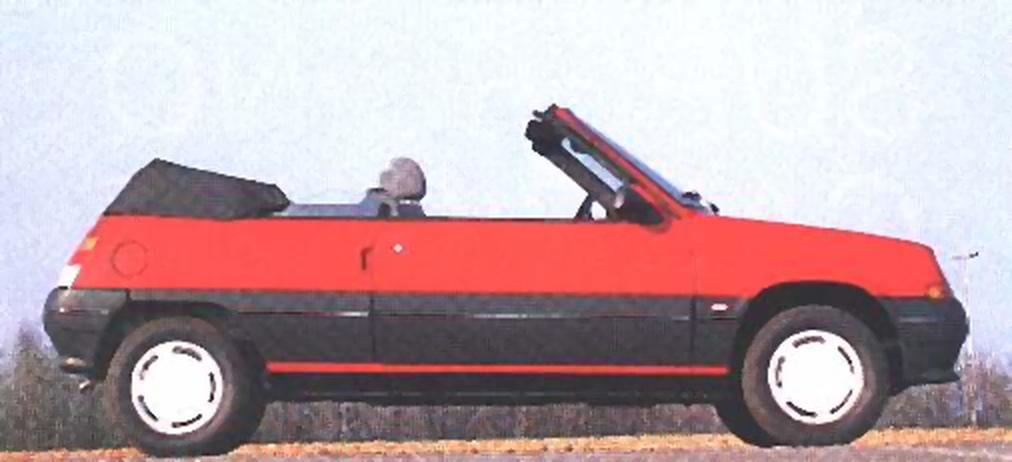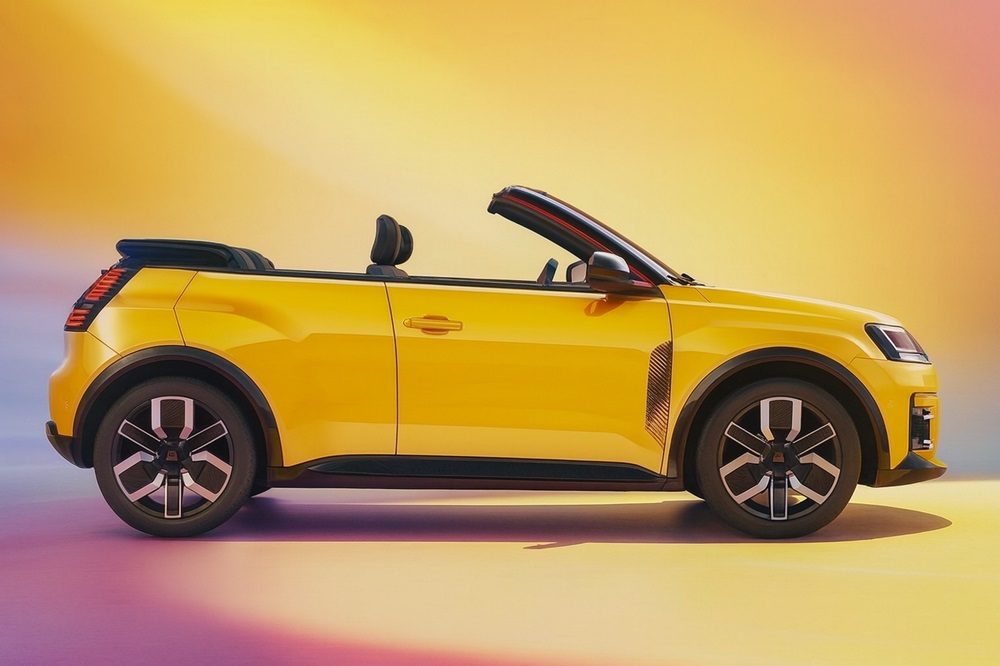Dreaming of a Roofless Five
A few days ago, I spotted the new “Five” from Renault on the road. While it had popped up in online ads before without catching much of my attention, in real life it genuinely intrigued me. After it lingered in my mind for a while, I started recalling the earlier versions Renault introduced back in the 1970s. Digging deeper, I discovered that the second generation (1984–1996) was actually converted into a cabriolet by an external company called EBS.
I did some research – and then took it a step further, projecting forward to 2025. Looking at the proportions and cheerful silhouette of the new Renault 5 E-Tech, it’s hard not to wonder: what if a Renault 5 E-Tech Cabriolet existed? A light, compact, urban car with an open roof – wouldn’t that be the perfect antidote to today’s uniform world of SUVs?
I even created my own Renault Concept Car vision of this car as a cabriolet. But it would be disrespectful not to look back in time first. Because history has already given us a roofless Renault 5.
Renault 5 Cabrio by EBS – a Belgian Curiosity
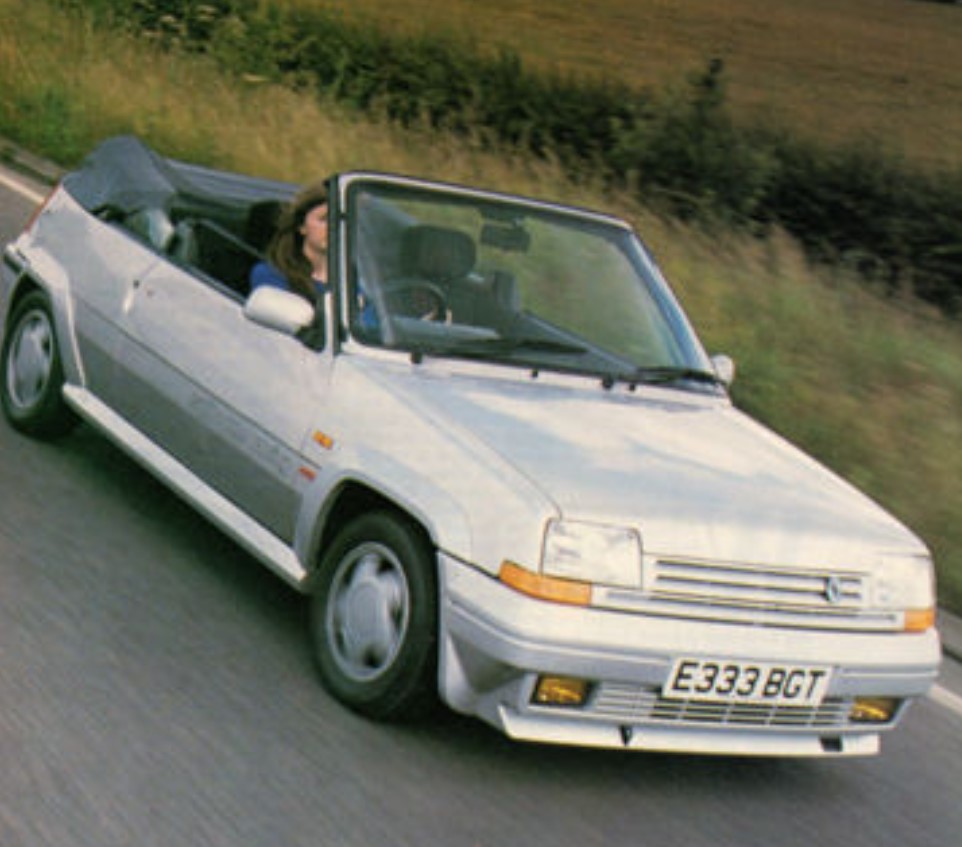
In the second half of the 1980s, Belgian company EBS Automotive converted the second-generation Renault 5 into a true cabriolet. This wasn’t just a one-off prototype – the company is believed to have made around 1,400 conversions (a rarity!). For the right-hand-drive version, only 33 units were produced (a mega rarity), including just 14 GT Turbo examples (a level of exclusivity that even Ferrari could envy).
The ordering process was unusual: customers paid a deposit of about 10% of the price, and completion took 4 to 6 months. In 1989, the base price was 8,998 Deutsche Marks, with options such as power windows, an automatically folding roof, and leather upholstery.
I found only one example currently for sale in Europe: a 1988 Renault Super 5 Baccara Cabrio – a rare convertible in the luxury Baccara trim. Under the hood sits a 1.7L petrol engine with 88 hp, 168,000 km on the clock, and a 5-speed manual transmission. Features include power windows, a leather steering wheel, tinted glass, and alloy wheels – quite attractive, especially for a car from 1988.
[Link to advertisement on autoscout24] I have no interest in providing a link to this ad – photos and link posted for educational purposes only.
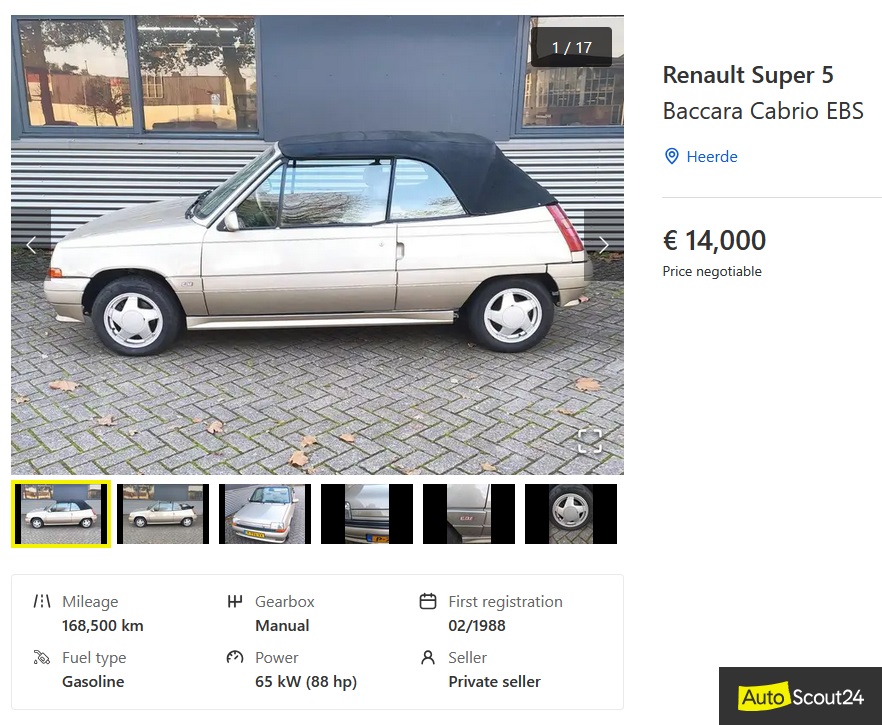
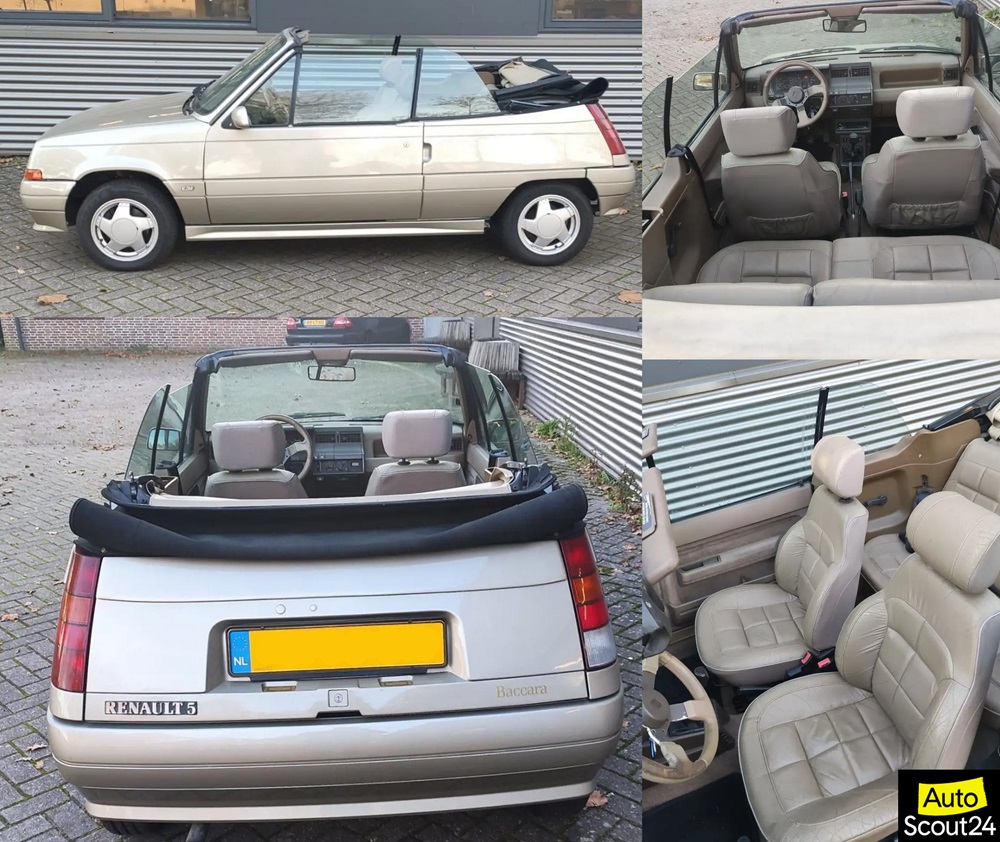
A Lesson for the Future
Looking at the new Renault 5 E-Tech while remembering EBS, it feels natural to imagine a repeat – this time in electric form. History shows such a conversion was technically possible 40 years ago. So why not today?
A few takeaways:
- Structural rigidity: with today’s battery floors, reinforced sills and frames would be crucial.
- Roof options: a basic manual roof for the budget version, and an electric-folding roof for the premium variant.
- Personalization: colorful roofs, contrasting details, styling packs – elements that help stand out in the gray monotony of traffic.
- Niche appeal as an advantage: a limited edition could become iconic, attracting younger buyers and collectors. And one more thing: considering the success of BMW’s Mini, Renault is stepping into the nostalgic-car market at just the right time.
Fewer Affordable Convertibles – and That’s a Shame
The problem is that convertibles are becoming rarer, especially affordable ones. Why?
- Safety costs – reinforcements, airbags, and crash tests make the project more expensive.
- Customer preferences – the market favors SUVs and crossovers, pushing cabriolets to the margins.
- Electrification – heavy batteries require extra structural stiffening, limiting design freedom.
- Economics – manufacturers prefer mass-market cars over niche convertibles.
Affordable cabriolets are practically extinct today – a pity, since just 15 years ago you could still choose models like the Peugeot 206 CC, Opel Tigra TwinTop, or Renault Mégane CC. Now only premium cars remain, and the joy of open-top driving is turning into a luxury.
Renault 5 E-Tech Cabrio – A Vision for New Times
The new electric Five could change that. Imagine:
- compact size, perfect for city driving,
- zero-emission powertrain,
- light silhouette with a soft top,
- affordable price – so a young driver wanting more than just another crossover could actually own one.
It could be a symbol of bringing back the joy of motoring – something that is increasingly lost in today’s standardized market.
Conclusion
The story of the Renault 5 Cabrio by EBS proves that such a project is possible. And today, with the rebirth of the Five as an electric model, the cabriolet idea could win over drivers craving freshness.
Maybe Renault should dare to take a step that blends nostalgia with modernity. Because while the world marches toward practical SUVs, a cabriolet will always remain a symbol of freedom and pure driving pleasure – though sadly, an ever-shrinking niche.
